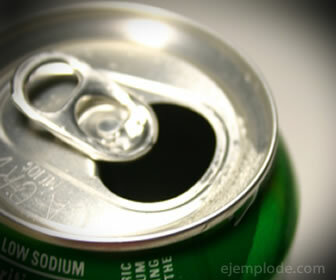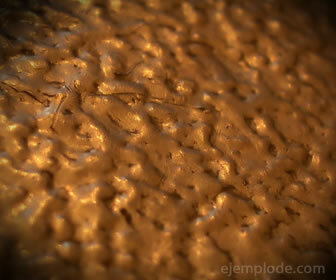Example of Electrically Conductive Materials
Physics / / July 04, 2021
It is known as conductive materials of electricity to those who have little resistance to the passage of an electric current, so they are the means of conducting electrical energy in a physical space.
Said from another perspective, electric conductivity is the property of a material that allows an electric current to travel through its atomic structure, with a low resistance from this material.
Since conductivity and resistance are electrical quantities that represent opposite phenomena, one is equivalent to the reciprocal of the other. This will be expressed when explaining the units of measurement.
The units of measurement that define electrical conductivity are the following:
k (electrical conductivity) is expressed in 1 / ohm.cm or mho / cm
Note that "ohm" is the unit of Electrical Resistance. It is placed as the denominator in the units 1 / ohm.cm because resistance represents the reciprocal of conductivity. In general, k has been handled in μmho / cm (micromhos / cm). The word "mho" is "ohm" backwards. This is how it is presented to place it as a numerator in the mho / cm units and not struggle when handling them.
k (electrical conductivity) is also expressed in milliSiemens / meter, that is (mS / m)
In the International System of Units, 1 ohm equals the reciprocal of 1 Siemens (1 / ohm = 1 S) or (1 / S = 1 ohm).
Both units of electrical conductivity have the following equivalence:
1 milliSiemens / meter = 10 μmhos / centimeter
Types of Electrically Conductive Materials
The electrical conductivity is presented in its maximum expression in Metals, thanks to its electronic configuration. The vast majority of metals have between 1 and 3 electrons in the last layer. Click to know the characteristics of metals.
Materials that conduct electricity, but not as efficiently, are called Semiconductors. These are located in the metalloid region of the periodic table. They usually have 4 electrons in their last shell. Examples of those used in the computer industry are the Silicon and the Germanium. Click to know the characteristics of metalloids.
The rest of the materials are classified as Insulating or Non-Conductive Materials. These are usually non-metals, polymers, and other complex structures.
When talking about conductors of electricity, it also applies to mention the Aqueous solutions, where there is a dissociation of the solute, and the system becomes an electrolyte, constituted by two charged particles or ions, which will be responsible for sustaining the passage of the current electrical. Click to know the electrolyte characteristics.
Metals as electrical conductors
The metals that best comply with the conductivity property are copper, gold, iron and aluminum, and some mixtures or alloys between them.
Among these options, copper is the most suitable to use for the benefit of man within electrical installations in homes and other types of constructions, It can be found protected with a series of plastics that will result in what we know today as cables.
Of course, other types of conductive materials can be used for this purpose. For example, silver could be used, which is the best conductor of electrical energy, However, due to the high costs that this type of material represents, it is not applied for such purposes.
Aluminum could also be used, which is used occasionally in airlines even when compared to copper represents a profit percentage of 60%, only that it turns out to be a lighter material, so it is ideal for use in that sector.
Main electrically conductive materials
1. Aluminum
Electric conductivity
The degree of conductivity of this material is high, and is represented physically as follows: 37.8 × 10 ^ 6 S / m. For this reason, it is an important reference in employment in the field of electricity and electronics. In particular, it is used in high voltage type wiring, as well as in so-called microchips.
Uses of this material
It is used in the production of some objects that are indispensable in everyday life. Among them we can find aluminum foil, which serves to protect food when it is packed or wrapped with it.
They are also used to manufacture some components in the electronics industry, in addition to being used in the aeronautics and naval industry. Of course, in high voltage wiring it is used too much.
It has also been applied for welding, in solar panels and in the construction industry.

2. Gold
Gold appears to the observer as one of the most obvious physical properties, a type of yellowish color, regardless of whether it has been found in a pure state level or combined with some minerals in small portions that when coming into recurrent contact with the river currents usually adhere.
Electric conductivity
Among one of the benefits of this type of energy-conducting material is that it is precisely the metal that has the best conductivity capacity compared to other metals.
Uses of this material
For practically the entire history of mankind, this type of material has been used with the firm determination to project a level of economic power, which are represented by the possession of certain amounts of jewelry and coins that have been minted with said material.
At present they have been applied in the development of new technological components focused on microchips, computers and mobile phones.
3. Copper
This type of metal is in a reddish hue in its purest state. It represents a chemical element symbolically represented by the acronym "Cu", with a coined atomic number corresponding to 29, along with an atomic weight of 63.546. This turns out to be a highly malleable material exhibiting a boiling point level of 2350 degrees centigrade and a melting level of 1083 degrees centigrade.
Electric conductivity
This is usually one of the metals that generate a high level of electrical conduction. In fact, the level of electrical conductivity is represented with a value of 59.6 X 10 ^ 6 S / m, that is why it is used too much in the industry for such purposes.
Uses of this material
It is not only used for the manufacture of tools and other materials for use in existing wiring systems. They are also used for the design of some types of jewelry, kitchen tools, as well as for use in the sector of the production of components for batteries. It is even used a lot in the automotive industry as catalysts.

4. Iron
This is one of the elements in the periodic table that has an atomic number of 26 and an atomic weight of 55,845. It is symbolically represented as follows: "Faith." This material can melt at temperatures ranging from 1220 degrees Celsius. And it represents a boiling point of at least 2,862 degrees Celsius.
Electric conductivity
It has the physical property of being an efficient conductor of electrical energy. In fact, its conductivity level is 9.93 · 106 S / m, and it can be applied specifically in the design and manufacture of some construction elements, electromagnets, and some motors electrical
Examples of conductive materials:
Metallic
- Silver
- Annealed copper
- Hardened copper
- Aluminum
- Zinc
- Iron wire
- Nickel
- German silver
- Cast iron
- Gold
- Platinum
- Lead
- Merucrio
- Cadmium
- Zinc
Metalloids
- Arsenic
Combinations or alloys
- Bronze with phosphorus
- Iron wire
Electrolytes
- Water with salt
- Vinegar
- Ammonium hydroxide

